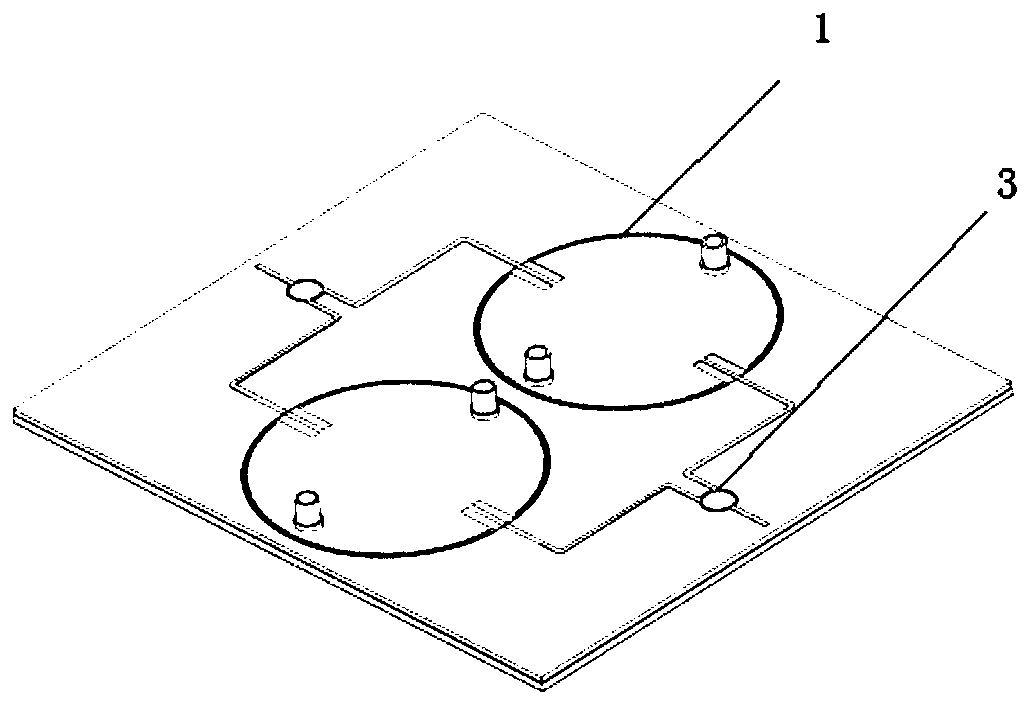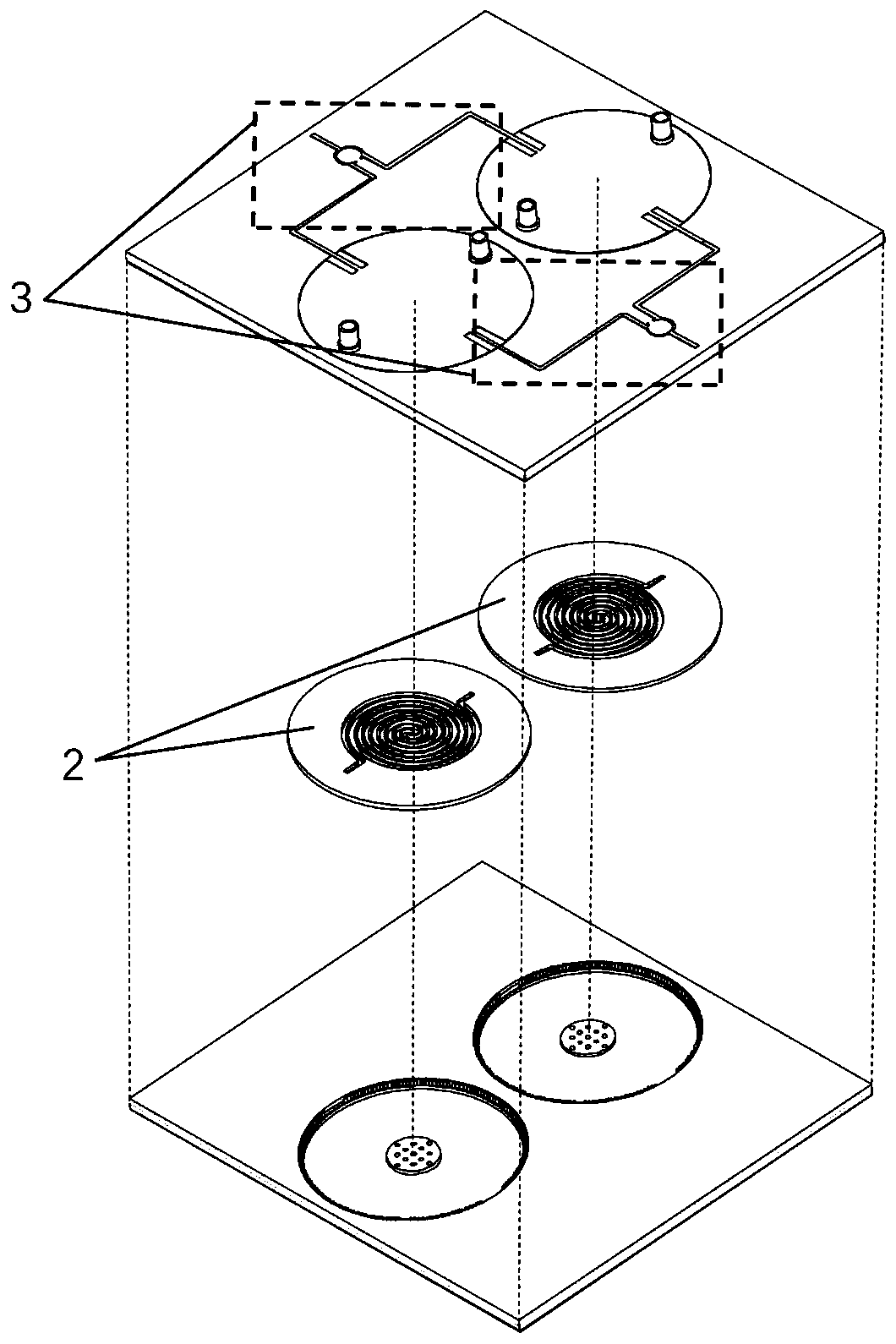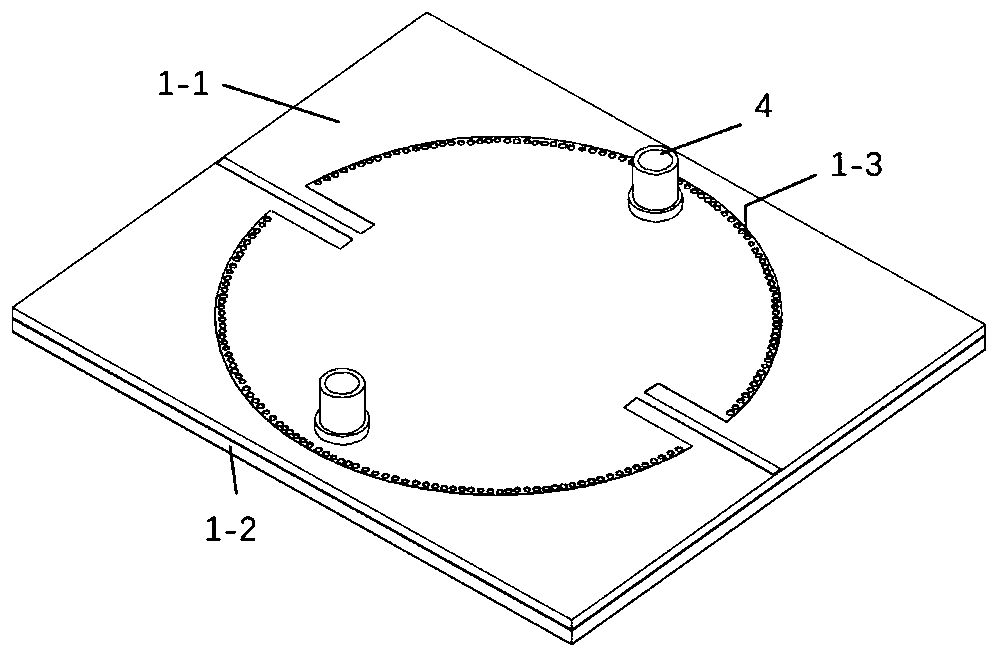Microwave sensor based on differential substrate integrated waveguide reentry resonant cavity and microfluidic technology
A substrate-integrated waveguide and microwave sensor technology, applied in the sensor field, can solve the problems of the microwave sensor being large in size, being easily affected by environmental factors, and being polluted by the tested product, and achieving the effects of light and thin volume, compact structure, and reduced manufacturing cost.
- Summary
- Abstract
- Description
- Claims
- Application Information
AI Technical Summary
Problems solved by technology
Method used
Image
Examples
Embodiment Construction
[0031] In order to better illustrate the design process and purpose, the present invention will be further described below in conjunction with embodiments and drawings:
[0032] Such as figure 1 , figure 1 (A), Figure 2(a) and Figure 2(b), the microwave sensor based on the differential substrate integrated waveguide reentrant cavity and microfluidic technology proposed by the present invention includes two substrate integrated waveguide An in-type resonant cavity monomer 1, two power dividers 3, and two microfluidic chips 2 embedded in the resonant cavity monomer.
[0033] The microwave sensor is composed of an upper cover plate 1-1 and a lower bottom plate 1-2. Both the upper cover plate 1-1 and the lower bottom plate 1-2 comprise a three-layer structure, which are respectively a top metal layer, an intermediate dielectric layer and a bottom metal layer.
[0034] The bottom metal of the upper cover plate 1-1 and the top metal of the lower bottom plate 1-2 have the same area, and th...
PUM
| Property | Measurement | Unit |
|---|---|---|
| Width | aaaaa | aaaaa |
| Thickness | aaaaa | aaaaa |
| Thickness | aaaaa | aaaaa |
Abstract
Description
Claims
Application Information
 Login to View More
Login to View More - R&D
- Intellectual Property
- Life Sciences
- Materials
- Tech Scout
- Unparalleled Data Quality
- Higher Quality Content
- 60% Fewer Hallucinations
Browse by: Latest US Patents, China's latest patents, Technical Efficacy Thesaurus, Application Domain, Technology Topic, Popular Technical Reports.
© 2025 PatSnap. All rights reserved.Legal|Privacy policy|Modern Slavery Act Transparency Statement|Sitemap|About US| Contact US: help@patsnap.com



